Search the Community
Showing results for tags 'Factory'.
Found 70 results
-
The following five models were originally built by my dad without the aid of Bricklink as it didn't exist yet. Only sets bought in stores or parts packs ordered from LEGO directly were used. (at least at first!) Some of these pictures are also quite old, so please bear with me on them. This old gray tunnel was built in the early 1990's. (I added the tan baseplate and RC tracks when I received it from him as a present.) This grain elevator model was around 1999 / 2000. Like most of his MOCs from that time, he built it before he had a BrickLink account. With this one he never finished it 100%, probably due to having us kids (including me) tearing it down and scattering parts every other weekend while he fixed it during the week. Eventually, he put them up out of reach except for special occasions such as the two weeks bracketing Christmas. This vintage model has been used by our family for layouts at his house at Christmas and other times for a long while, throughout most of my childhood up to 2012 or so when we stopped doing a tree + floor layout. These two finger-hinged doors hold the grain back until it is needed to be loaded. He eventually gifted this model to me about in 2021 because he built the Brick Train Depot version and it is better / bigger by like double in size. I added the conveyor belt and tan baseplates for the bottom, as it fits with the rest of my buildings better. This double track train shed was built before I was even born, in 1989. It was originally single track and used parts using quite a few copies of set 6380 (Emergency Treatment Center) from 1987. The rear of the shed. Around 2003, he rediscovered the model and decided to add a second stall to the engine shed, which he did (using a rather new website called Bricklink) He even added brick built re-railers to in-between the rails. The girder bridge was built in the mid -'90's and features the base-plate from set 6552 (Rocky Retreat) from 1993. The guard rails were added in the mid-2000's. This factory was constructed around the years 2001 - 2004 with parts from several Sand Red supplemental packs available at that time. It does not feature any interior, nor does it have a removable roof. But this thing is built STRONG: you have to really put your weight on it to press the roof together. It has never been determined what this factory made in-universe, though for my own purposes, I pretended it made beverages. What beverages, you ask? Why, Leg O. Brick's Root Beer of course! Thoughts on these five older MOC's?
-
Hello. I am glad to present you my new project for LEGO Ideas. my model :) I like to build trucks on a scale of about 1:64. Previously, they were mostly single models, but now I plan to add some environment to them. One of the first ideas was to build an automated truck assembly line. The assembly takes place in several stages: at the first stage, a suspension is added to the truck frame, at the second - wheels and engine with transmission, the third stage adds the assembled cabin, and at the fourth stage, glazing and fastening of additional equipment takes place. Next, the finished model is checked, and you can send it to a car dealership. Well, or add some module for cargo :) Trucks can be assembled with different cab and rim colors. As for the assembly line itself, it is automated. The staff only monitors the process. I will be glad to see your comments with reviews, and thank you for your attention!
-
A small factory (windmill) for the Eslandola town of Punto Sur: Punto Sur exhibits properties with a feel for the Classic Pirates era, so I chose the color scheme of white and red, with no tans or dark reds. Four years ago I built a micro windmill that was only 8 pieces (9 if you counted the base). Trying that minimalist approach again, this build uses 11 pieces, but could have used as few as 7 if I had used a one-piece base and hadn't added the technic pin at the hub of the sails (the pin just fills the hole and adds no structural element to the build). All C&C welcome!
-
Big Red, "Gros Rouge," was raised in Eltina and now has opened his very own small factory in his home town. Having apprenticed with a smith in Breshaun, he would regularly see folks from home having travelled clear across the island to by a new ax head or shovel for the vineyards. When his skills had finally matured, there was no question about his next move, only how to finance it. One day, a member of the noble house of Beauchamp, the Admiral's young son Edward, had come to collect a specially commissioned ax head for a tomahawk. Happy with the work, the two struck up a conversation and eventually came to Big Red's plan to build a smith of his own in Eltina. A few weeks later, Red had his chance to demonstrate his skill by presenting his work to Admiral Beauchamp himself. Recently opened, the Gros Rouge Smith has been a godsend to the townsfolk in Eltina, no longer having to wait for a transport or make the journey across the island themselves. Big Red's shop is thriving and hums at a busy pace. Part of the financial deal worked out with the Admiral was the apprenticeship of the Admiral's young nephew Jacque. Wanting nothing more than to run off and join his older cousin in the campaign on Terraversa, Jacque is finally busy enough to stay grounded day to day and is learning a skill from a young talent. The dual "spires" of the workshop make the Gros Rouge Smith stand out. An ingenious design, the windmill drives a screw to keep the bellows pumping and has a second screw to drive a drop hammer if the wind is strong enough to turn hoist the weight.
-
Eslandola’s settlement of Fuerte Unido continues to grow. A windmill to grind grain into flour is now operational, and the miller is already busy. The windmill uses a tower mill design. The top rotates to position the wings so they face into the wind. That means coming out the door can be dangerous for the miller at times, and the wagon driver needs to be careful about where he parks his wagon. Here the miller’s helper loads sacks of flour onto the delivery wagon. Meanwhile, the neighbor’s sheep graze in the grass, watched by the neighbor’s boy. Some more pics: A medium factory for Fuerte Unido (and, yes, another windmill from me) and more fun with printed panels. All C&C welcome.
- 9 replies
-
- fuerte unido
- factory
-
(and 2 more)
Tagged with:
-
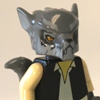
[ESL-FB] Water-powered sawmill for Interlagos
Capt Wolf posted a topic in Brethren of the Brick Seas
Eslandola's settlement on Maldria was growing, especially with the new brickmaker's kiln. But the men were getting tired of cutting all the lumber by hand, so they dammed off a stream so they could build a waterwheel to power a sawmill. The undershot waterwheel powers a saw to cut logs into planks. Some of the soldiers also discovered that the pond created by the small dam was a good fishing spot. The central part of the mill was built with field stones to support the waterwheel, but the storage shed was built of log construction. With both bricks and sawn lumber, more construction would be possible for the settlement of Interlagos. --- This build started out as an experiment with the roof joint, that failed miserably, as the above photo shows. The angle of the joint didn't neatly fit the angle of any wedge plates, and ultimately there's far too much of a gap, so selective photo angles were necessary. Also, only after I had started to disassemble the build did I realize it would have looked much better if I had tiled the upper part of the pond rather than using loose 1x1 round plates. Oh well, live and learn. Still, I was happy with the stone wall, and I got my first experience trying to build a small waterfall. Also, I didn't do an interior for this build. The roof supports didn't really allow for it, and I have done a sawmill interior before. I will try to get back to showing interiors on future builds. All C&C welcome. -
If the new Eslandolan settlement of Interlagos was going to grow, it needed a means of construction. The clay of the river banks and lake bed was well-suited for making bricks, so ballast bricks were taken from the expedition's ships to build a kiln. The clay from the river bank was set into wooden molds, then deposited on beds of sand for drying. Once thoroughly dry, the clay bricks were baked in the kiln for a week. The fire had to be tended constantly. Once cooled, the bricks were stacked and sorted, as some might be under-fired and other might be over-fired clinkers. Thus the settlement’s first industry was established: a brick-making factory. Now brick buildings in Interlagos can be built easily. ----------- A horribly over-simplified explanation and depiction of brick-making in colonial times, with some steps omitted for ease of building the MOC, but I am happy with how it turned out. All C&C welcome.
- 8 replies
-
- brickmaking
- factory
-
(and 3 more)
Tagged with:
-
Since Hero Factory first started, I wondered how it could be connected with Bionicle. My current theory is that, after Mata Nui became dormant again, the Agori and Matoran needed a solution to their problems. Glatorian were too weak, and Toa were too few. Over hundreds of years, technology advanced, space travel was harnessed and new planets were discovered. It was then that an enterprising young Agori by the name of Akiyama Makuro finally developed a factory capable of building new warriors, known as Heroes. Do you have a different theory? Post it below!
-
This is render of a commissioned model I am working on. 90% of the bricks are already ordered so building can soon start. The model has about 50k bricks and is 2m75 x 1 m in size
-
The people of northern Halos are accustomed to seeing windmills of various types across the continent and in their island colonies. But many have not seen the type built by the natives of Ferro Azure. Instead of the familiar blades spinning on a horizontal axis, which use gears to transfer the rotational power to a vertical shaft, the windmills built by these island people use paddles to catch the wind attached directly to the vertical shaft. Walls around the paddles help channel the wind so that it only hits on one side of the axis. Otherwise, they would work against themselves and would not spin. The mill seen here, near Eslandola's colonial settlement of Salida Este, shows wear from years of use. The bright yellow paint is worn away in places, and some of the indigo plants that grow naturally on the island can be seen around the paths. Here the miller's wife greets one of her friends, whose son carries a basket of grain on his head. The miller will grind flour for many families, and store the final product in barrels and sacks under the steps on the side of the mill. Here one his helpers is storing a new barrel. A customer has come to pick up his sack of flour. He looks upset, but it is only because his son did not come to help him retrieve it. Some more pics of the build: To be licensed as a medium factory. --- I had been looking for a different kind of windmill to build and discovered this design. My build would have been better if the paddles were more delicate, made of reeds or such instead of planks, but I'm still happy with how it came out. All C&C welcome.
- 10 replies
-
- mctc
- salida este
-
(and 5 more)
Tagged with:
-
1950's Rust-eze modular factory with boxcars and semi-truck - real life MOC's
Murdoch17 posted a topic in LEGO Train Tech
Introducing the Rust-eze factory, which is where they make the rust remover / chrome restorer product Inspired by / not quite the same as the one seen in the CARS & PLANES shared universe from Disney / Pixar . I have set this building in my transition-era layout, which means the 40's through the mid-1980's, as the steam / diesel mix era continued longer on my alt-timeline. Their is a small 0-6-0ST switcher that services the factory as seen above and here in it's own topic. The factory without the train in front. The rear of the factory, with the ladder to the top of the chimney flue. The detachable roof can be removed, however I never really finished the inside part, and probably never will as I haven't a clue what to put in there machinery-wise. The loading doors do open, and were modified from the original arched doors as they couldn't fit a forklift... then again, these doors might not either! I was inspired by this photo by JB Lego to build these boxcars as seen here. They are made to haul pallets of cargo, specifically Rust-eze chrome restorer in 55-gallon drum containers for commercial packaging at another facility into smaller containers. This model was heavily inspired by set 8486, (Mack's Team Truck) from 2011. I changed the model to seat one mini figure at the wheel, added new headlights and license plate plus revised the fenders and enlarged the cab. The rear of the semi features a opening door and fold-down trailer stand, while the cab has two moving driver's doors. The trailer no longer has opening sides, but it does have two opening rear doors and folding stand for when the cab pulls away. Speaking of the cab, the roof of the driver's compartment comes off and both doors open. I hoped this factory would be of some use for some people, as the original always has been gathering dust in the basement since it was built, as seen below: This is the original factory that was by my Dad around the years 2000 - 2004. it was built with parts from several Sand Red supplemental packs available at that time. It does not feature any interior, nor does it have a removable roof. But this thing is built STRONG: you have to really put your weight on it to press the roof together. Here is the rear of his model. Comments, questions, suggestions, and complaints are always welcome! EDIT 4/9/19: added real life photos of the factory. -
I wondered how these "things" were done. It seems that the empire is also recycling. All pics here : https://flic.kr/s/aHsms5y5EX
-
Location: Mesabi Landing Type: Large Factory Literacy rates continue to climb in Mesabi Landing, as a wide selection of books were printed in Mesabi Landing's printing factory Book Making by North White, on Flickr In a small outbuilding, Tony oversaw the typesetting onto the printing plate. Book Making by North White, on Flickr In the main building, Captain Angles made sure that all the steps of production were done according to plan. Book Making by North White, on Flickr Type was put onto each press, and paper underneath it. Book Making by North White, on Flickr Each press imprinted the words onto paper, and the printed pages were stacked in piles. Book Making by North White, on Flickr Pages were stacked in order, and bound with horse glue, and covered with a horse leather cover. Book Making by North White, on Flickr Soon, another load of books would be sent out to the Brick seas... FIN Thanks for viewing this build! C&C appreciated!
-
The MCTC settlement of Salida Este on the island of Ferro Azure had grown at a leisurely pace over its first couple of years. Now the time had come for the Merchants Colonial Trading Company to develop their underutilized gem of the Azure Sea. The "old town" of Salida Este was a hodge-podge of rustic, individualistic properties, but the MCTC wanted to build a focal point for the settlement, a "new town" sector that could serve as a hub for growth into the future, both on the island and beyond to the islands to the east. The first step was to build a colonial headquarters. Amazingly, in spite of the growth of other MCTC settlements in the islands such as Bardo and especially Weelond, the MCTC's only HQ was still in the Old World. The next step was to take advantage of what development had already occurred on Ferro Azure. There was already a large cotton plantation, and a large dye factory had been built to process the indigo that grows naturally on the island. These resources were perfect for one of the economic strengths of the MCTC: textiles. And so this led to the construction of a large textile factory in Salida Este's "new town" sector. As you can see, Eslandians and indigenous people work together in various roles in the factory. Here are workers unloading cotton bales as a floor manager looks on: Other supplies are unloaded as well, but the shift foreman appears to be upset about something again! The factory machinery is powered by a waterwheel: The "undershot" style does not produce as much power as an overshot wheel (where the water pours over the top of the wheel), but it still produces enough power for the factory. The cotton is spun into spools of thread: After the thread is dyed, the looms weave it into cloth: Here a young local woman waits for her boyfriend's shift to end. A few more pics: Thanks for looking. All C&C welcome.
- 15 replies
-
- factory
- salida este
-
(and 1 more)
Tagged with:
-
Location: Quinnsville Type: Large Factory The WTC's efforts into Horse consumption had come to a head with their new, innovative product! Jellied Horse In a Can by North White, on Flickr Jellied Horse Meat! In a Can! Jellied Horse In a Can by North White, on Flickr First cooked in sea water, than in fresh water with a mix of proprietary WTC spices, the horse meat turned into a delicious jiggly concoction fit for any meal! Jellied Horse In a Can by North White, on Flickr With innovative Cans with a rubber lid (patent pending!) the delicious treat could be stored for months at sea. Untitled by North White, on Flickr WTC ships picked up crates by the cartload, all for sale across the Brick Seas! WTC! a Leading Pioneer in Innovation! FIN
-
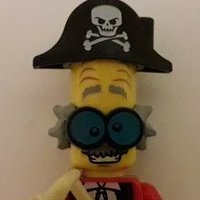
[SR - FB2 May 18] Fishing from the shore
Professor Thaum posted a topic in Brethren of the Brick Seas
The shallow waters surrounding Tortuga are some fisherman's heaven, because a wide variety of fishes snuggles into... The fishermen of the island, as skilled sailors, knew all the treacherous area of the shoals and shallow waters around Tortuga. But because of the very large area of shallow waters, the tide is sometime very tricky and the waves are dangerous, likely to capsize the row boats. They finally took advantage of the shallow waters full of fish and built some huts on stilt... the perfect place to fish in safety : a small fishing factory for Tortuga C&C welcome as ususal -
Location: Mesabi Landing Type: Large Factory Argentia, while mostly dry and baron, was home to a small lake on the north side of the Island. Today, Agnes and Mordo hiked out to the far reaches, where a new factory had been set up. Hydrological Harvesting by North White, on Flickr A large crane helped unload the railcar, next to the side of the factory. Hydrological Harvesting by North White, on Flickr The factory had a hand cranked Brickimedes screw to pump water into the factory. Hydrological Harvesting by North White, on Flickr Inside, the water was boiled and put into bottles, fresh from the bottle factory down the road. Hydrological Harvesting by North White, on Flickr And so, the WTC continued to make money by exploiting the world's resources. FIN So, I'm back after a long hiatus, involving finals, mono, organizing, and cleaning. Hope you enjoyed this factory, and the continued efforts of the WTC to become your overlords be productive members of the Brick Seas.
- 6 replies
-
- mesabi
- corrington
-
(and 2 more)
Tagged with:
-
Lego 5005358 Minifigure Factory As part of the 40th Anniversary celebration by Lego, they're giving this set as a freebie with $75 purchases in April 2018. I got mine for buying some sets I wanted and figured I'd share this cool free set. Name: Minifigure Factory Set Number: 5005358 Pieces: 86 Price: $Free (with $75 purchase) Minifigs: 1 (plus 5 microfigs) Theme: n/a Year of Release: 2018 Links: Bricklink Brickset The Box An unusual box, since all the normal print is a paper wrapper around the actual box. The Back of the Box That is a massive number of warning languages. The Wrapper and Box The wrapper slides off, revealing a printed box underneath. The box itself is not sealed at all - it just has a tab in a slot on the top. The Contents Inside are the manual, a printed interior, a grey plate that's glue into place in the box, a printed card, and the bag of parts. Interestingly, the bag is not the normal type of plastic that Lego uses. This plastic is softer and not crinkly. The Minifigs The Lego worker is a GREAT figure. The choice of yellow for the shirt is awkward though. I know it's the standard employee shirt (such as in Lego stores), but on the yellow-skinned fig it's weird. Is it a long sleeve shirt? If it was short-sleeved would we even know? Or is it sleeveless? But enough about him. Check out those microfigs! I think the white "hat" on the policeman is weird since it's not an actual hat, but I can overlook that. The Minifigs' Backs There's no second face on the figure, and limited printing on the microfigs, but I can't complain. The Build, 1 Not shown, you first build a little red cart. The main part of the build is shown like this - building on the grey plate - but the actual plate is glued into place in the box. Makes things a little more difficult for the big-handed among us, but nothing too hard. The Build, 2 The Build, 3 The assembly line itself. 2 of the 3 printed parts are shown here. The set includes 1x2 printed tiles in the yellow/black stripe pattern (4 of them), a 1x4 tile in the same pattern, and a 1x2 tile with a segmented arrow that's from the Boost and Ninjago City sets. But why green paint on the brush? They made a new paintbrush with medium azure paint on it for the Easter set - why not make that set and this one share a brush in a more common color, like red or blue? I'm thinking there must be another use for the medium azure brush coming, but that's just me thinking Lego wouldn't have made a custom printed brush for that one freebie set. Then again, they did custom print the egg for it.... The Build, 4 The assembly line sits onto the base and then pins are inserted from the back.... I sense a play feature coming! The card goes onto the pins and is held in place by Technic half bushes. Unfortunately, the card covers up the 2 printed photos on the back of the box (or at least one a time, depending on how the line is positioned). I love the detail Lego put into these - it wouldn't be a Lego set without a coffee cup, and they tied the green paintbrush in with the left picture. The Build, 5 This is why that card was added. As you slide the line back and forth, the picture in the window changes to match the microfig below. Simple but so cool of a feature to add. And nice representation of the minifigure patent hanging on the wall. The Build, 6 And we have the figure in his spot, working hard inspecting the microfigures. Not shown is one big flaw that I can't believe made it to production. You cannot slide the line far enough to the right to have the Pixal image fully in the window. It needs to go another stud over, but it can't. There's a stop on the underside of the line, plus it's hitting the side of the box. The End of the Manual The end of the manual has a 2 page spread of the history of the minifigure. The End of the Manual, 2 This page covers some more recent minifigure advances. Short legs, baby figs, but why is Mr. Gold on here? He was part of Series 10, so not the start of the collectible lines, and he's a figure that many fans are bitter about since he was so hard to find. The Conclusion I love this freebie. The microfigs are great representations of classic figures (well, most of them - I'm not sure that Pixal is worthy of inclusion) and it's a clever set. It closes back up nicely for storage, but this is one that will be sitting out on a lot of shelves I'm sure. The Ratings Value: 10/10 - It was free with purchase. And you get a custom box, custom printed microfigs, a cool minifig, and nice play features. Design: 8/10 - The box is great, but the line can't slide quite far enough to the right. Minifigs: 10/10 - IMHO, Pixal should have been something else. A castle fig would have been better, but I suspect Pixal was chosen both to represent Ninjago AND because the purple stands out. Playability: 8/10 - Small and simple, but clever design. Parts: 9/10 - I always love having the printed hazard stripe tiles, but these will be staying in this set. Otherwise nothing special, but nothing more was really needed. Overall: 9.5/10 - It's hard to complain about a freebie, but I do wish the line slid over further and they'd picked a different last microfig.
- 20 replies
-
- review
- minifigure
-
(and 2 more)
Tagged with:
-
Location: Mesabi Landing Type: Large Factory The Rails of Mesabi Landing had made everything disturbingly efficient. Inky Brewsters by North White, on Flickr Coal was being transported to factories across the town, which by now was impressively sized. Inky Brewsters by North White, on Flickr But Coal was just one of the ingredients needed to produce products in this factory. Inky Brewsters by North White, on Flickr Ink was important throughout the colonies, and could be manufactured easily with simple ingredients. Inky Brewsters by North White, on Flickr A mixture of Horse Glue, Water, and Coal made the sticky black substance that was needed throughout the colonies. Inky Brewsters by North White, on Flickr WTC: A leading Pioneer in Innovation. FIN Thanks for viewing my large factory! I hope you liked this build. C&C appreciated!
-
Cast iron is a valuable commodity in the islands. It's very expensive to ship iron from the mainland, so an iron foundry is an important part of a growing settlement. Here is the iron foundry in Weelond: The iron ore and charcoal needed for the blast furnace are kept in a storage house, near the furnace, but accessible from the street for easy delivery of the raw materials: The furnace is kept going for days on end without cooling down and reaches temperatures of nearly 2000 degrees (note the worker's protective facewear): When ready, a worker breaks the hole to allow the liquid iron to flow out: The molten iron flows into channels, where it cools... ... and is cast into ingots ("pigs") that can be used by blacksmiths to be formed into various items. Here piles of iron ingots can be seen in the background while a customer discusses delivery arrangements. A view from the street: Additional views: With the addition of this iron foundry, which will be licensed as a medium factory, Weelond is now a Large City! ---------- This was built and photographed by @Drunknok as my prize from his Merrynight challenge. I think he did an excellent job!
-
Location: Mesabi Landing Type: Medium Factory Medium metal foundry ML factory 1 by LM71Blackbird, on Flickr A new coal using metal foundry for Mesabi Landing! ML factory 2 by LM71Blackbird, on Flickr A load of coal just got unloaded and is being put into the furnace. ML factory 3 by LM71Blackbird, on Flickr A cutaway of the inside showing the process of melting the raw metal ores and forming the metal ingots. C&C are welcome as usual and thanks for viewing!
-
Location: Arlinsport Type: Medium Factory Ever since the emergence of the WTC, horse life spans had decreased significantly. Sticky Business by North White, on Flickr But the WTC was never an organization to cause problems! Sticky Business by North White, on Flickr And so, Horse Skeletons were brought to the WTC's processing center in Arlinsport Sticky Business by North White, on Flickr A large loading dock allows for loading from both land and sea. Sticky Business by North White, on Flickr Sticky Business by North White, on Flickr Inside, skeletons are dismembered into small pieces. Sticky Business by North White, on Flickr Next, they are boiled into a sticky gel that makes an easy glue for uses throughout the colonies Sticky Business by North White, on Flickr All that's left is loading them into crates! Sticky Business by North White, on Flickr WTC: A leading pioneer in innovation. FIN Thanks for viewing my factory! This build should finally nudge Arlinsport into city territory, and bring Corrington into a new age of science, and innovation. I'm actually quite proud of this one, although I'm not entirely sure if my portrayal of glue making is accurate. Either way I'm happy with it. C&C appreciated!
-
One of the signature sights of the Weelond coast are the windmills taking full advantage of the stiff breeze blowing in from the Sea of Storms. Last month I presented "Grist Mill #1"; this month I present the mill cleverly designated in the city ledgers as "Grist Mill #2". It is a post mill like the other one, but instead of the trestle supports being open to view, a roundhouse is built around the supports to serve as a storage area for grain to be milled or flour ready to be delivered. I originally planned on presenting the two windmills as part of one large scene, but I didn't have enough green plates to handle the terrain. But to show that I didn't reuse any of the first windmill, here they are together. As usual, all C&C welcome.
-
Location: Charlatan Bay Type: Large Factory He air hung heavy with the screams of horses and the scent of blood as Charlatan Bay's most industrial factory worked hard to create a vital product. Horse sausage Factory by North White, on Flickr Horses were brought in on small boats to the edge of Charlatan Bay, where the factory worked hard to process them. The WTC Riff Raft brought in two an hour on a good day. Horse sausage Factory by North White, on Flickr Completed Sausages were smoked in a small smokehouse built on the remains of the captains cabin. Horse sausage Factory by North White, on Flickr But Unfortunately, the Horses had to be sheared and dehoofed before they could be made into sausages, which was the bottleneck of the operation. Horse sausage Factory by North White, on Flickr But, once they were liberated, they could be ground down into sausages. It usually took a bit of prompting to force them into the grinder, but giving them a stiff drink beforehand usually weakened their resolve. Horse sausage Factory by North White, on Flickr And so, box after box of horsausage was made, smoked and shipped off into the colonies. Horse sausage Factory by North White, on Flickr FIN Hope you liked this build everyone. The factory is supposed to be built on a wrecked ship, next to an equally wrecked building, I'm just not sure how clear that is in the pictures. I really had fun with this one, and with all my Charlatan Bay builds in general. It was nice to have a change of atmosphere with my builds. I'll probably license the WTC Riff Raft in the future as a class 0, but I'm usually pretty lazy about doing so. C&C appreciated! Let me know if I should upload better photos as well, It's midnight here, and the light ain't to good.

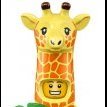
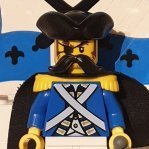



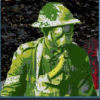

.thumb.jpg.e660cf72f2e60ec12f7362dac3534e35.jpg)